Prime Suspect 4: The Lost Child / Inner Circles / The Scent of Darkness Blu-ray Movie
HomePrime Suspect 4: The Lost Child / Inner Circles / The Scent of Darkness Blu-ray Movie 
Acorn Media | 1995 | 318 min | Not rated | No Release Date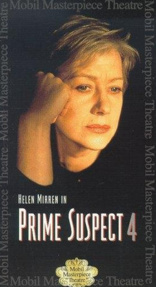
Price
Movie rating
6.4 | / 10 |
Blu-ray rating
| Users | 0.0 | |
| Reviewer | 3.5 | |
| Overall | 3.5 |
Overview
Prime Suspect 4: The Lost Child / Inner Circles / The Scent of Darkness (1995)
In three separate cases, Tennison orchestrates a search for an abducted baby, follows a sex murder investigation into a hidden political scandal, and investigates series of brutal sex murders disturbingly similar to the pattern her first major case, suggesting that she may have convicted the wrong man.
Starring: Helen Mirren, Beatie Edney, Robert Glenister, Lesley Sharp, Tracy KeatingDirector: John Madden (I), Sarah Pia Anderson, Paul Marcus
| Drama | Uncertain |
| Crime | Uncertain |
| Mystery | Uncertain |
Specifications
Video
Video codec: MPEG-4 AVC
Video resolution: 1080p
Aspect ratio: 1.78:1, 1.33:1
Original aspect ratio: 1.33:1
Audio
English: DTS-HD Master Audio 2.0
Subtitles
English SDH
Discs
50GB Blu-ray Disc
Single disc (1 BD)
Packaging
Slipcover in original pressing
Playback
Region A (B, C untested)
Review
Rating summary
| Movie | 3.5 | |
| Video | 3.0 | |
| Audio | 3.5 | |
| Extras | 0.0 | |
| Overall | 3.5 |
Prime Suspect 4: The Lost Child / Inner Circles / The Scent of Darkness Blu-ray Movie Review
Three New Cases—and an Old Enemy
Reviewed by Michael Reuben August 23, 2013(Spoiler alert: The following assumes that the reader is familiar with all previous series of Prime Suspect. If you haven't seen all previous series, proceed at your own risk. A spoiler-free overview of the Complete Collection can be found here.) First Broadcast: April 30, May 7, 15, 1995 (U.K.); October 22, 1995, February 11, May 5, 1996 (U.S.) Almost a year and a half passed between Series 3 and 4 of Prime Suspect, but in Jane Tennison's life, the events of the two series were separated by only a brief interval. Series 4 picks up shortly after the promotion that Tennison negotiated at the end of Series 3. It also opens on the morning of the abortion that she scheduled in Series 3's final moments. In a cruel irony, the newly promoted Superintendent is immediately plunged into a case involving a missing child. With the exit of Lynda La Plante as Prime Suspect's driving force, the show's producers couldn't resist the temptation to experiment. Instead of telling a single story replete with subplots in an extended two-part miniseries, they tried instead to create self-contained crime stories that could be wound up at the end of each feature-length episode. Series 4 is composed of three such stories, each with its own title, writer and director. Series 4 is, accordingly, the longest of the show. For its American broadcast, PBS chose to spread the episodes over a period of nearly seven months, which, in retrospect, was a serious error. Though self-contained, the episodes were designed to be viewed together. They show Tennison in her new position and, as a group, they provide a portrait of the challenges that higher rank brings to someone who plays by her own rules. ("This job is about politics", as her mentor, DCS Kernan, warns her.)
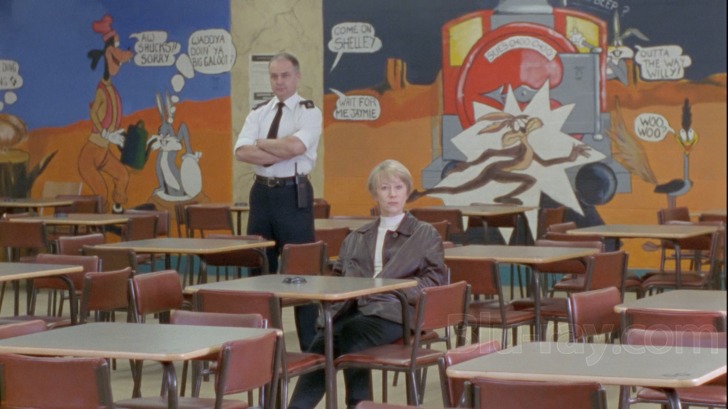
1. The Lost Child (written by Paul Billing; directed by John Madden) After keeping her appointment for terminating the accidental pregnancy caused by her evening with crime author Jake Hunter, Tennison (Helen Mirren) briskly interrupts the doctor reciting post-procedure instructions: When can she get back to work? Unfortunately for Tennison, the case that awaits her will not make it easy to forget her recent procedure. A toddler, Vicki Covington, has been kidnapped from her crib, and the mother, Susan Covington (Beatie Edney), left on her apartment floor bleeding from a head wound. Tennison's new Superintendent's position places her in charge of an AMIT unit, which, in my rudimentary understanding of the London Met in this era, was a kind of roving major crimes squad. The Covington case puts Tennison back in her former Southampton Row "nick", where Superintendent Thorndike has already cleared out, and Tennison has the distinct pleasure of removing his nameplate from the door of the office that is now hers. The search for Vicki Covington quickly focuses on a man seen near her playground. A police artist's sketch and a review of registered sex offenders in the area lead Tennison's team to Chris Hughes (Robert Glenister, MI-5 and Hustle), who lives near the Covington household with a single mother, Anne Sutherland (Lesley Sharp), and her two daughters. The Sutherland family knows nothing of Hughes's past. Hughes's alibi for the time of Vicki Covington's disappearance is flawed, and there's incriminating circumstantial evidence, but the case isn't strong enough to hold him. Tennison and DI Tony Muddyman (Jack Ellis) interview Dr. Patrick Schofield (Stuart Wilson), a criminal psychologist who treated Hughes during his incarceration as a pedophile. Schofield doubts that Hughes abducted a child under five, but warns Tennison not to push Hughes too hard, lest he revert to old habits and endanger the Sutherland girls. While initially unwilling to share any confidential information on Hughes, Schofield later relents and provides limited access to Hughes's records. The Lost Child contains many intriguing elements, but it feels underdeveloped, probably because of time constraints. Tennison too often seems like a bystander running to catch up with events that are being controlled from elsewhere; this is especially true of a climactic hostage situation that is caused, in part, by misbehavior from one of her staff and, once in progress, is largely taken out of her hands by the Armed Response team. The dialogue contains far too much exposition-by-speech, in which a character explains him- or herself (or someone else) at length, instead of allowing that explanation to arise from events and interactions. (I call it "the Law & Order syndrome".) The best parts of the episode are when Tennison is alone, thinking about the case and her own life, and Mirren expresses those thoughts with a few gestures, a look and perhaps a sigh. 2. Inner Circles (written by Eric Deacon; story by Meredith Oakes; directed by Sarah Pia Anderson) One downside of Tennison's new rank is paperwork. DCS Kernan (John Benfield) has her working on budget reports, which Tennison hates; so she's thrilled when a call comes in seeking an officer of command rank to deal with a murder case in an affluent London suburb. The ranking local officer, DCI Raymond (Ralph Arliss), can't be reached, because, as it turns out, he's trysting with one of his subordinates, Sergeant Christine Cromwell (Sophie Stanton). Tennison has dealt with Raymond before and has a low opinion of him. The victim is Denis Carradine (Gareth Forwood), manager of the Huntington Country Club, who recently either retired or was discharged, depending on who is telling the story. Carradine is found in his home strung up by a rope, with his pants down, in a pose suggesting some sort of sex game, and a pair of drug-addled burglars are initially blamed. One, Sheila Bower (Julia Rice), is arrested at the scene, while the other, Micky Thomas (Jonathan Copestake), is later badly injured while fleeing from the police. It all seems open-and-shut until the medical evidence reveals that Carradine was strangled in advance and the scene staged afterward—a murder far too calculated for the likes of Bower and Thomas. Over DCI Raymond's protest, Tennison keeps the case and calls in her trusty sidekick, Richard Haskons (Richard Hawley), to assist. The more the detectives examine the dead man's life, the less it adds up. Among other things, he mortgaged his house for 180,000 pounds just a few months before he died, but the money immediately disappeared, leaving him broke. Further inquiry reveals that Carradine invested in a vast and decrepit property that the town council sold at a below-market price on the recommendation of Paul Endicott (James Laurenson), the chief planning officer. Both buyer and seller were represented by a local attorney, Maria Henry (Jill Baker), a divorcee and a close friend of Endicott and his wife, Lynne (Kvale). Everything revolves around the Huntington Country Club where Carradine was manager. The Endicotts' son, Hamish (Nick Patrick), even works there as a busboy. The Club's managing director is an oily gentleman named James Greenlees (Anthony Bale), and he seems to be everywhere: the town council, the planning commission, even the oddly named "Police Consultative Committee". He's the kind of "leading citizen" whose power is so presumed that he thinks nothing of suggesting to the police what the outcome of their investigation should be. A strong undercurrent of class prejudice runs through The Inner Circle. The members of the Huntingon Country Club abhor the residents of the nearby Larchmont Estates, who are mostly poor and out of work, and the land transaction in which Carradine was involved may have had something to do with preventing any further such developments. Maria Henry has a daughter, Polly (Kelly Reilly), who routinely slips off to the estates to see a boyfriend named Geoff (Thomas Russell), which drives her mother mad. DS Cromwell, who obviously doesn't come from money, burns with obvious resentment whenever she deals with wealthy citizens, requiring Tennison to rein her in repeatedly. The possibilities are intriguing, but they remain underdeveloped, because there isn't time to pursue them. It takes most of the episode for Tennison to unravel the scheme and then wage a psychological war of attrition against the guilty parties until someone cracks and confesses. 3. The Scent of Darkness (written by Guy Hibbert; directed by Paul Marcus) Unfortunately for the producers of Prime Suspect, John Bowe, the actor who played George Marlow in Series 1, was not available to reprise his role in what amounts to a Marlow "sequel". Then again, prison changes people, and actor Tim Woodward must have carefully studied Bowe's performance, because he captured the same ambiguous charm that Bowe brought to the role. Although Marlow entered a surprise plea of not guilty at the end of Series 1, he was tried, convicted and sent to prison, where he quietly reads and writes letters. His common law wife, Moyra, has died, but not before recanting both her statement to Tennison and her trial testimony, after which she insisted on Marlow's innocence. Moyra's protestations are the centerpiece of a book by journalist Mark Whitehouse (Ray Fearon), who claims that Marlow was railroaded into jail by Tennison. No one in the Met cares about any of this until two female bodies are discovered in quick succession bearing wounds and restraint marks virtually identical to those on Marlow's victims. Tennison has herself assigned to the case, along with DS Haskons, but she immediately clashes with DCI Tom Mitchell (Tom Fulford), who wants to investigate the possibility that Marlow was wrongly convicted and the real serial killer has returned. Someone on Mitchell's team leaks information to the press, and as public reaction swells, top officials in the Met feel compelled to take appropriate measures to maintain appearances. Tennison is removed from the case, Mitchell is placed in charge, and DS Thorndike (Stephen Boxer) is instructed to review the entire Marlow file. The latest victims exhibit one apparently new feature: a perfumed scent in their hair that is eventually identified as gardenia. As it happens, Tennison has become seriously involved with Dr. Patrick Schofield, the clinical psychologist she met on the Covington case in The Lost Child, and it is he, with fresh eyes, who spots details in the police file that suggest this scent may have been a feature of Marlow's crimes as well. Tennison undertakes her own investigation into the possibility, and she also tries to learn how a copycat might have become aware of an element of Marlow's crimes that even the police didn't notice. For her troubles, she gets suspended from the force. But there are worse things than suspension. Purely by chance, Tennison stumbles across a connection between Patrick Schofield and the author Mark Whitehouse. Then she finds that Patrick has kept files on both her and Marlow. Is their relationship just a pretext for research? Meanwhile, a third woman has disappeared under circumstances strongly suggesting she is the next victim. It's been established that the killer holds his victims for two days and kills them on the third. As the fateful hour approaches, DCI Mitchell's team runs out of leads, and Tennison has to sift the available information to determine who could possibly know Marlow's methods well enough to copy them.
Prime Suspect 4: The Lost Child / Inner Circles / The Scent of Darkness Blu-ray Movie, Video Quality 
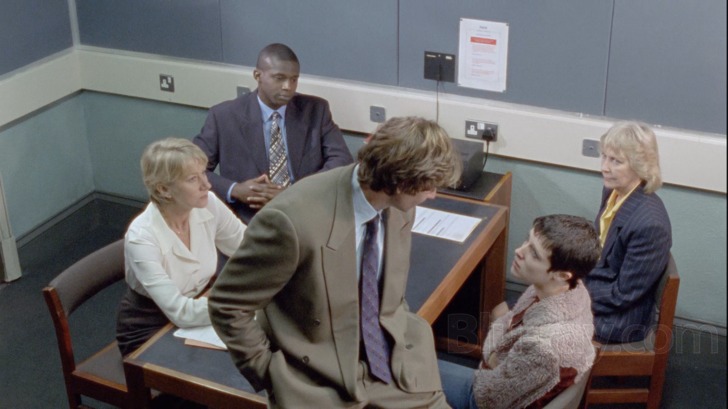
The Lost Child is offered is in its original 1.33:1 ratio. For a discussion of the reformatted 1.78:1 aspect ratio of Inner Circles and The Scent of Darkness, please see the Video section of The Complete Collection review. The extra screencaps with this review include sample comparisons between the Blu-ray and Acorn Media's DVD release of Series 4, which retained the original 1.33:1 aspect ratio for all three parts. (Note that the DVD image has been slightly squeezed; this was not uncommon on DVD to compensate for overscan.) The 1080p, AVC-encoded Blu-ray opens with the disclaimer quoted in the Complete Collection review. With respect to The Lost Child, not much need be said. This is the DVD image, upconverted, somewhat brightened and cleaned up to the extent possible. But there is no more resolution here than in the original standard definition image. We can only hope that the original Super 16mm negative is located and/or restored someday. With respect to Inner Circles and The Scent of Darkness, the Blu-ray image is comparable in quality to that of Series 1-3, with a caveat that I'll get to in a moment. As with the previous series, the "opened up" frame varies from sharp and detailed to fuzzy, soft and grainy, but the latter is the exception. The production design for Series 4 does not feature many strong colors, but those that do appear make an impression. The Blu-ray image is once again brighter than the DVD's, but blacks remain sufficiently black to suggest that the brightening is not excessive. By this point in my viewing of Prime Suspect, I assumed that noise reduction had been applied, but unless I noticed any motion artifacts or unnaturally smoothed textures, I was not concerned. Now to the caveat: In Inner Circles, an occasional shot appears to be a blowup from a source of lower resolution that lacks the full width of the original negative. These shots have been cropped to fit the 1.78:1 frame, blown up and electronically massaged to fit into the hi-def master as best as possible. This was presumably done to replace damaged portions of the negative. The effect is similar to watching a film restoration where portions have been taken from prints, dupes or other lesser sources. It isn't always easy to differentiate these blowup shots from others that are simply soft or diffused; so one shouldn't necessarily assume that a weakness in the image results from a recourse to lesser material. The only way to tell for sure is to compare the DVD framing. (I did not notice any such shots in The Scent of Darkness, but it's possible some went by so quickly that I missed them.) At 318 minutes, Series 4 is by far the longest Prime Suspect. However, The Lost Child has substantial black space to the left and right, and the image is already so compromised that compression errors would not be obvious. Inner Circles and The Scent of Darkness did not look any different in this regard than the other series.
Prime Suspect 4: The Lost Child / Inner Circles / The Scent of Darkness Blu-ray Movie, Audio Quality 
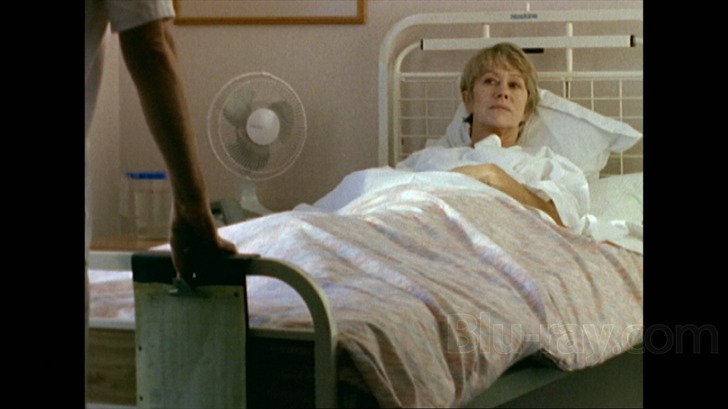
The DTS-HD MA 2.0 track for the three parts of Series 4 returns to the more basic sound mixes of the earliest installments of Prime Suspect. Dialogue is clear, essential sound effects remain in front, and Steven Warbeck's score is used sparingly. The mixes are functional, effective and well reproduced.
Prime Suspect 4: The Lost Child / Inner Circles / The Scent of Darkness Blu-ray Movie, Special Features and Extras 
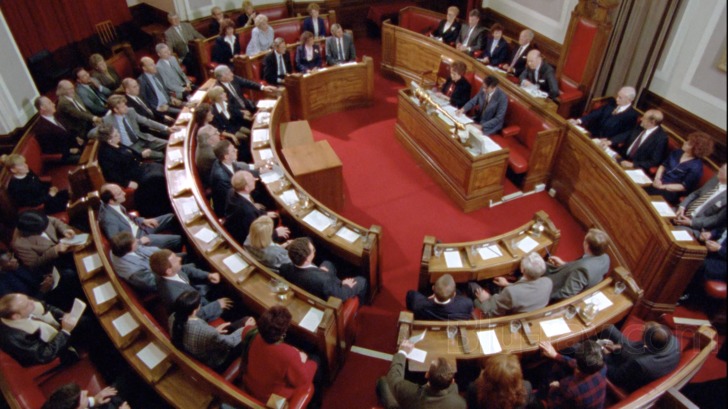
No extras are included with Series 4. At startup the disc plays a trailer for Jack Taylor, which can be skipped with the chapter forward button.
Prime Suspect 4: The Lost Child / Inner Circles / The Scent of Darkness Blu-ray Movie, Overall Score and Recommendation 

With the exception of The Scent of Darkness, which built its story on an established foundation, the self-contained episodes of Series 4 fall short of the show's potential, because they don't have enough room for the drama to "breathe" at every level at which Prime Suspect excels when it operates at peak performance. In both The Lost Child and Inner Circles, the mechanics of the crime plot take precedence (as they should), which leaves too little time for character development, social context and the sense of a moral universe from which Tennison's commitment to police work draws its strength. As far as I know, no one associated with Prime Suspect ever came out and said so, but the fact that the standalone format was abandoned after Series 4 strongly suggests that the creative team recognized these shortcomings. These three episodes are worth watching, if only because they feature Mirren as Tennison, but they're the weakest of the group.
Similar titles
Similar titles you might also like
(Still not reliable for this title)

Prime Suspect 5: Errors of Judgement
1996

Prime Suspect 1
1991

Prime Suspect 6: The Last Witness
2003

Prime Suspect 7: The Final Act
2006

Prime Suspect 2
1992

Prime Suspect 3
1993

Inspector Lewis: Series 8
Lewis: Series 9
2015

Red Riding: The Year of Our Lord 1980
2009

Red Riding: The Year of Our Lord 1983
2009

Red Riding: The Year of Our Lord 1974
2009

Sharp Objects
2018

Twisted
2004

Insomnia
2002

The Lodger: A Story of the London Fog
1927

Gideon of Scotland Yard
Choice Collection
1958

In the Electric Mist
2008

Secret in Their Eyes
2015

True Detective: The Complete Seasons 1-3
2014-2019

The Element of Crime
Forbrydelsens element
1984

They Call Me MISTER Tibbs!
1970